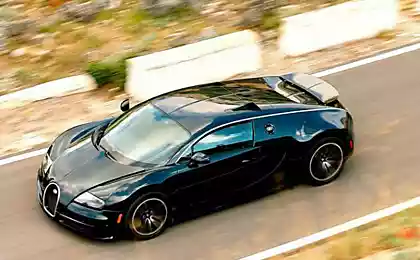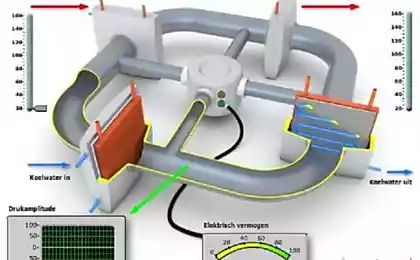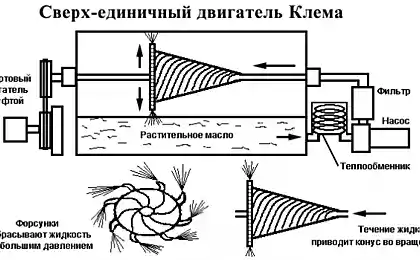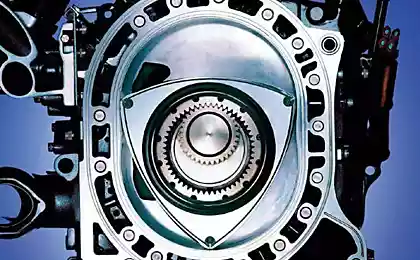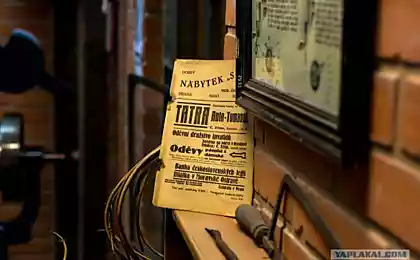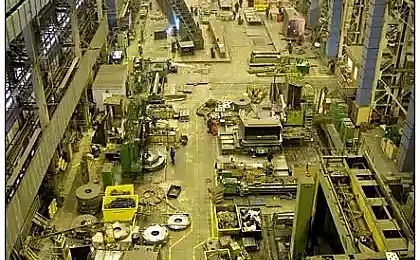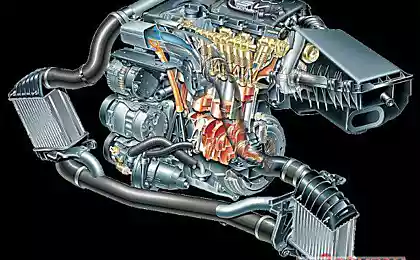752
Mistakes become discoveries!
Dozens of things that we use every day, were due to simple chance. The most famous such revelation, of course, is the discovery of America by Christopher Columbus, who actually swam towards Asia. And now, according to Washington ProFile, American researcher Charlotte Foltz Jones DzhonsCharlotte published a book "Errors that have earned» Mistakes That Worked, which collected many examples of errors to a greater or lesser extent influenced the life of mankind.
Then another 10 posts with text
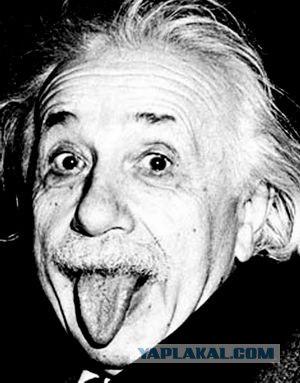
Coca-Cola In 1886, the doctor and pharmacist John Pemberton was trying to prepare medicine based on extracts from the leaves of the South American coca and African kola nuts, has tonic properties. Pemberton tasted the finished medicine and realized that she has good taste. Pemberton felt that the syrup could help people suffering from fatigue, stress and toothache. The pharmacist took the syrup into the largest pharmacy of the city of Atlanta. On the same day we sold the first batch of syrup for five cents a glass. However, the drink Coca-Cola was the result of negligence. Accidentally dealer, diluted syrup, mixed Cranes and poured soda instead of the ordinary. The resulting mixture and was "Coca-Cola". Initially, this drink has not had much success. During the first year of production of soda Pemberton spent $ 79.96 on advertising a new drink, but he was able to sell Coca Cola just $ 50. Now Coca-Cola produced and consumed in 200 countries.

One of the most popular types of cookies in the US - biscuits with chocolate chips. It was invented in the 1930s, when a small hotel hostess Ruth Wakefield decided to bake VeykfildRuth oil biscuits. Woman to break a chocolate bar and stirred with pieces of chocolate dough, hoping that the chocolate will melt and give the dough brown and chocolate flavor. However, Wakefield announced the ignorance of the laws of physics, and she pulled out of the oven cookies with chocolate chips.

Adhesive paper appeared as a result of a failed experiment to enhance the resistance of the adhesive. In 1968, an employee of 3M research laboratories trying to improve the quality of the adhesive tape (Scotch). He's got a tight glue, which does not soaked in the bonding surface and was completely useless for the production of adhesive tape. The researcher did not know how to use a new sort of glue. Four years later, his colleague, who in his spare time he sang in the church choir, was annoyed that the bookmark in the book of Psalms, always fell. Then he remembered the glue that could fix the paper bookmarks, without damaging the pages of a book. In 1980, the Post-it Notes were first put on the market.

In 1844, inventor Charles Gudiyr accidentally discovered the recipe for rubber, which does not soften in heat and does not become brittle in the cold. The new technology is called vulcanization. Gudiyr many years unsuccessfully trying to improve the quality of the rubber, at that time a very moody and awkward material once accidentally heated a mixture of rubber and sulfur on the kitchen stove. The discovery of the vulcanization process of rubber was the impetus for the development of the electrical industry as well as rubber is an excellent insulation material. Gudiyra invention made possible the emergence of the modern car.

This device, saving the lives of millions of people suffering from diseases of the heart, was invented by accident. In 1941, engineer John Hopps commissioned naval Navy carried out research in the field of hypothermia. Before him was tasked to find a way to quickly warm the person, for a long time stays in the cold or in cold water. Hopps was trying to use for heating high-frequency radio waves and accidentally discovered that the heart stops beating due to hypothermia, can again be "running" if it is stimulate electrical impulses. In 1950, on the basis of the opening Hopps, it created the first pacemaker. He was big and uncomfortable, its use sometimes led to the appearance of burns on the body of the patient. Medic Greytbatch Wilson made a second accidental discovery. He worked on the device, which was to record heart rate. One day, he accidentally put into the wrong resistor and said that in any electrical circuit oscillations resembling the rhythm of the human heart. Two years later he created the first Greytbatch implantable pacemaker, artificial feeding pulses to stimulate the heart.

In 1928 scientist Alexander Fleming observed that penicillin mold fungus has infected one of his samples with pathogenic bacteria staphylococcus left an open window. Fleming studied the sample under a microscope and noticed that mold kills bacteria. The importance of the discovery Fleming became clear only in 1940, when the world had begun a massive study of new types of drugs-antibiotics. Now antibiotics very widely used in medicine, they make up 15% of all drugs sold in the world.

Supermarket Trolley Merchant Sylvan Goldman invented the first shopping cart in 1936. Goldman was the owner of a large grocery store in Oklahoma City and noticed that the buyers refuse to buy some goods because they are hard to bear. The discovery was accidental: Goldman pointed out, as one shopper put a heavy bag on a toy car that her son rolled on the rope. Merchant first attach to the usual basket of small wheels, and then enlisted the help of mechanics and created a prototype of a modern truck. Mass production of this device was launched in 1947. The invention carts allowed to create a new kind of store - a supermarket.

Harry Vasilyuk in 1950 invented the first garbage bag. Vasilyuk was an inventor and engineer and one day approached by the city municipality, which posed the problem: to ensure that waste does not spill during loading machines containment. Vasilyuk a long time pondering over the creation of a vacuum cleaner of similarity, but decision came suddenly. Some of his friends, or home (versions differ) threw the phrase: "I need a bag for trash!". Vasilyuk realized that for the operations with debris should use disposable bags and offered to do it from polyethylene. The first plastic garbage bags started to use hospital in Winnipeg. The first trash bags intended for individuals appeared in the 1960s. Now one of the major challenges that lie ahead of humanity, is the disposal of garbage.

Known researcher Percy Spencer who received more than 120 patents for inventions employee of one of the largest companies in the global military-industrial complex Raytheon, accidentally became the creator of the microwave oven. In 1945, shortly before the end of World War II, he conducted research, aims to improve the quality of radars. At the moment of experience, Spencer has passed before transmitter worked, and discovered that chocolate bar in his pocket melted. After a series of experiments established the first microwave stove, which weighed about 400 kg. Its supposed to be used in restaurants, planes and ships - where required quickly reheat food.

And 11.)))
If you think that Russia did not invent by mistake, cruel and unpatriotic wrong.
Get at least the same buns with raisins, accidentally invented by a cook Russian sovereign. Whether in a hurry, or simply having too broad range of motion, the hapless baker kneading troughs overturned in a tub of raisins. First, the poor fellow turned pale with horror, but wrinkled berries to fish from the test it was absolutely impossible.
Sovereign is the work enjoyed so much that even the cook was assigned to the reward.

Source:
Then another 10 posts with text

Coca-Cola In 1886, the doctor and pharmacist John Pemberton was trying to prepare medicine based on extracts from the leaves of the South American coca and African kola nuts, has tonic properties. Pemberton tasted the finished medicine and realized that she has good taste. Pemberton felt that the syrup could help people suffering from fatigue, stress and toothache. The pharmacist took the syrup into the largest pharmacy of the city of Atlanta. On the same day we sold the first batch of syrup for five cents a glass. However, the drink Coca-Cola was the result of negligence. Accidentally dealer, diluted syrup, mixed Cranes and poured soda instead of the ordinary. The resulting mixture and was "Coca-Cola". Initially, this drink has not had much success. During the first year of production of soda Pemberton spent $ 79.96 on advertising a new drink, but he was able to sell Coca Cola just $ 50. Now Coca-Cola produced and consumed in 200 countries.

One of the most popular types of cookies in the US - biscuits with chocolate chips. It was invented in the 1930s, when a small hotel hostess Ruth Wakefield decided to bake VeykfildRuth oil biscuits. Woman to break a chocolate bar and stirred with pieces of chocolate dough, hoping that the chocolate will melt and give the dough brown and chocolate flavor. However, Wakefield announced the ignorance of the laws of physics, and she pulled out of the oven cookies with chocolate chips.

Adhesive paper appeared as a result of a failed experiment to enhance the resistance of the adhesive. In 1968, an employee of 3M research laboratories trying to improve the quality of the adhesive tape (Scotch). He's got a tight glue, which does not soaked in the bonding surface and was completely useless for the production of adhesive tape. The researcher did not know how to use a new sort of glue. Four years later, his colleague, who in his spare time he sang in the church choir, was annoyed that the bookmark in the book of Psalms, always fell. Then he remembered the glue that could fix the paper bookmarks, without damaging the pages of a book. In 1980, the Post-it Notes were first put on the market.

In 1844, inventor Charles Gudiyr accidentally discovered the recipe for rubber, which does not soften in heat and does not become brittle in the cold. The new technology is called vulcanization. Gudiyr many years unsuccessfully trying to improve the quality of the rubber, at that time a very moody and awkward material once accidentally heated a mixture of rubber and sulfur on the kitchen stove. The discovery of the vulcanization process of rubber was the impetus for the development of the electrical industry as well as rubber is an excellent insulation material. Gudiyra invention made possible the emergence of the modern car.

This device, saving the lives of millions of people suffering from diseases of the heart, was invented by accident. In 1941, engineer John Hopps commissioned naval Navy carried out research in the field of hypothermia. Before him was tasked to find a way to quickly warm the person, for a long time stays in the cold or in cold water. Hopps was trying to use for heating high-frequency radio waves and accidentally discovered that the heart stops beating due to hypothermia, can again be "running" if it is stimulate electrical impulses. In 1950, on the basis of the opening Hopps, it created the first pacemaker. He was big and uncomfortable, its use sometimes led to the appearance of burns on the body of the patient. Medic Greytbatch Wilson made a second accidental discovery. He worked on the device, which was to record heart rate. One day, he accidentally put into the wrong resistor and said that in any electrical circuit oscillations resembling the rhythm of the human heart. Two years later he created the first Greytbatch implantable pacemaker, artificial feeding pulses to stimulate the heart.

In 1928 scientist Alexander Fleming observed that penicillin mold fungus has infected one of his samples with pathogenic bacteria staphylococcus left an open window. Fleming studied the sample under a microscope and noticed that mold kills bacteria. The importance of the discovery Fleming became clear only in 1940, when the world had begun a massive study of new types of drugs-antibiotics. Now antibiotics very widely used in medicine, they make up 15% of all drugs sold in the world.

Supermarket Trolley Merchant Sylvan Goldman invented the first shopping cart in 1936. Goldman was the owner of a large grocery store in Oklahoma City and noticed that the buyers refuse to buy some goods because they are hard to bear. The discovery was accidental: Goldman pointed out, as one shopper put a heavy bag on a toy car that her son rolled on the rope. Merchant first attach to the usual basket of small wheels, and then enlisted the help of mechanics and created a prototype of a modern truck. Mass production of this device was launched in 1947. The invention carts allowed to create a new kind of store - a supermarket.

Harry Vasilyuk in 1950 invented the first garbage bag. Vasilyuk was an inventor and engineer and one day approached by the city municipality, which posed the problem: to ensure that waste does not spill during loading machines containment. Vasilyuk a long time pondering over the creation of a vacuum cleaner of similarity, but decision came suddenly. Some of his friends, or home (versions differ) threw the phrase: "I need a bag for trash!". Vasilyuk realized that for the operations with debris should use disposable bags and offered to do it from polyethylene. The first plastic garbage bags started to use hospital in Winnipeg. The first trash bags intended for individuals appeared in the 1960s. Now one of the major challenges that lie ahead of humanity, is the disposal of garbage.

Known researcher Percy Spencer who received more than 120 patents for inventions employee of one of the largest companies in the global military-industrial complex Raytheon, accidentally became the creator of the microwave oven. In 1945, shortly before the end of World War II, he conducted research, aims to improve the quality of radars. At the moment of experience, Spencer has passed before transmitter worked, and discovered that chocolate bar in his pocket melted. After a series of experiments established the first microwave stove, which weighed about 400 kg. Its supposed to be used in restaurants, planes and ships - where required quickly reheat food.

And 11.)))
If you think that Russia did not invent by mistake, cruel and unpatriotic wrong.
Get at least the same buns with raisins, accidentally invented by a cook Russian sovereign. Whether in a hurry, or simply having too broad range of motion, the hapless baker kneading troughs overturned in a tub of raisins. First, the poor fellow turned pale with horror, but wrinkled berries to fish from the test it was absolutely impossible.
Sovereign is the work enjoyed so much that even the cook was assigned to the reward.

Source:










